Learning Objectives
Explain the basic steps of creating a presentation with Google Slides.
Googles Slides is free to use, but to do so requires a Google account. If you don’t already have a Google account (i.e., a gmail address, Google Drive or Google Calendar), you will need to create one in order to use Google Slides. To establish a Google account, search for “Google account” or go directly to the Google Account sign up page.
New Presentations
To start a new presentation, search for “Google slides” or go to https://www.google.com/slides/about/.
See Figure 2 for a visual of the application’s opening view. You can start a new blank presentation or choose from a number of existing, editable presentations or templates. If you recently viewed a shared presentation or created a presentation, you would see it listed under Recent Presentations.
To start a new presentation, click on the plus (+) sign in the Blank Presentation box.
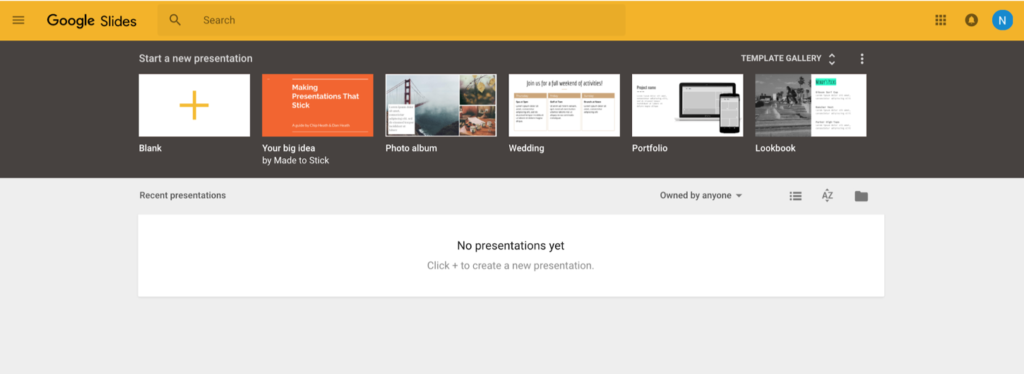
Within Google Slides, as in all Google applications, your work is saved automatically. Until you name your presentation, it will save as Untitled presentation.
To title your presentation, click in the [Untitled Presentation] box and type your desired title. By default, Google slides will insert the text from the title box as the title; you can accept that or delete and enter an alternate title (see Figure 3).
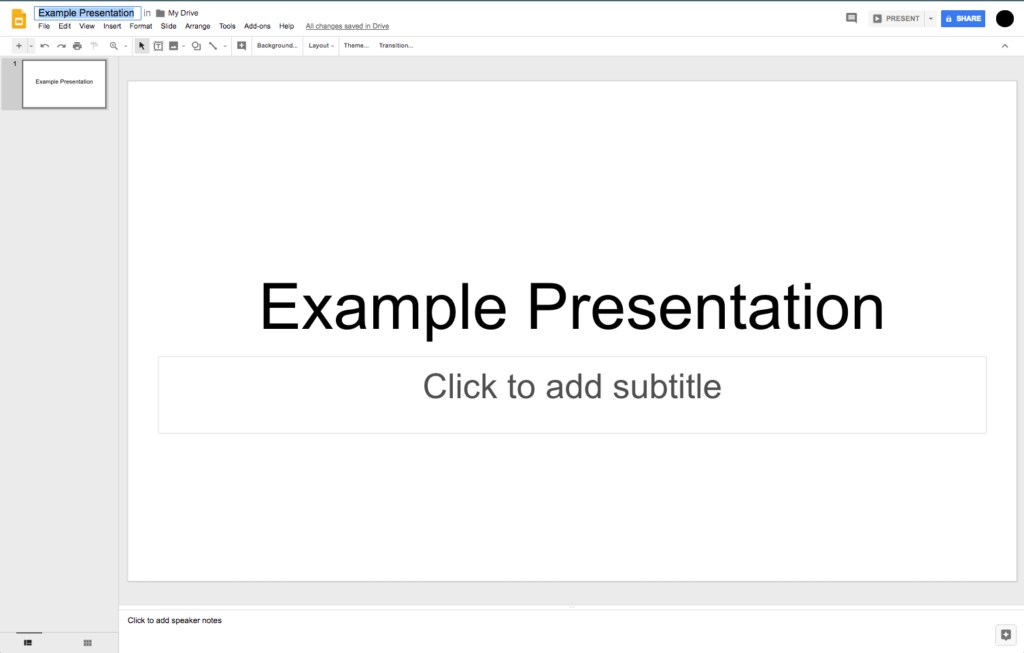
Practice Question
Organizing Slides
There are multiple options for adding slides:
- Select “+” (New slide) from the second menu line. To select a specific slide layout, use the dropdown menu to the right of the slide to add a slide that best matches the content for that slide
- Use the New slide shortcut: Ctrl+M
- From the Insert dropdown, select New slide (Ctrl+M) Select Insert > new slide
- Select Slide > Duplicate slide, which will copy the slide that’s currently highlighted in the thumbnail section in the left column of the screen
- Right click in a slide in the thumbnail sidebar and select New slide or Duplicate slide
To delete a slide, right click on the thumbnail image and press delete OR delete from the Slide dropdown: Slide > Delete slide. If you delete a slide in error, don’t panic! Click on the Undo arrow or use the Ctrl+Z shortcut.
To move a slide, click on the slide in the sidebar—this will highlight the thumbnail—and drag it to where you want it to appear. A second sorting option is to shift from the default (“Filmstrip”) view to Grid view—View > Grid view—and use a select, drag and drop method. You can toggle between the default and Grid view by selecting the icons at the bottom of the thumbnail window.
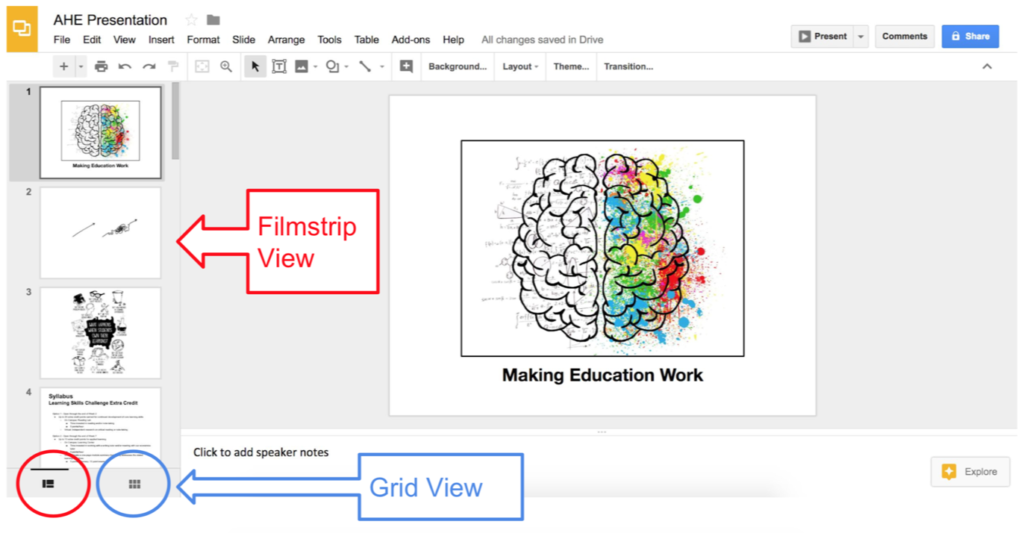
Try It
Text Boxes
As with most actions in Google slides, there are multiple ways to add a text box:
- Select the Text box icon from the main menu (see Figure 1).
- Select Insert > Text Box.
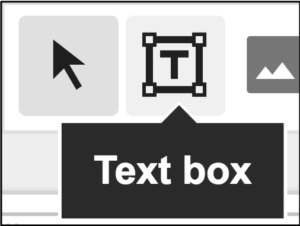
Using either method, your cursor will become a crosshair; position your cursor where you want the text box to start and click to anchor. Drag the cursor the approximate width and length of your anticipated text entry and release the cursor. If you want to change the location of the text box, click within the text box to highlight it and use the arrow keys on your keyboard to reposition. To change the box dimensions, click within the text box (if it’s not already highlighted) and hover over one of the anchor points (tiny boxes). A directional arrow will appear; click to stretch or reduce the size; release when complete.
To delete a text box, select to highlight and press delete. If you change your mind, click on the Undo (Ctrl+Z) arrow.
Practice Question
Themes
Themes are one of the formatting options within Google Slides. To view theme options, click on Slide > Change theme. A column will appear on the right of the screen, showing various color, layout and font options. To see how a particular combination would work with your content, click on your chosen theme. You can continue test-driving themes; clicking on a new theme will replace the prior choice. There’s no risk of losing your original formatting; Undo (or Ctrl+Z) will return you to your original theme. You can also import a theme from outside Google Slides. Click on the Import theme button at the bottom of the themes column. Sites such as Slides Carnival allow you to copy slide formats directly into Google Slides.
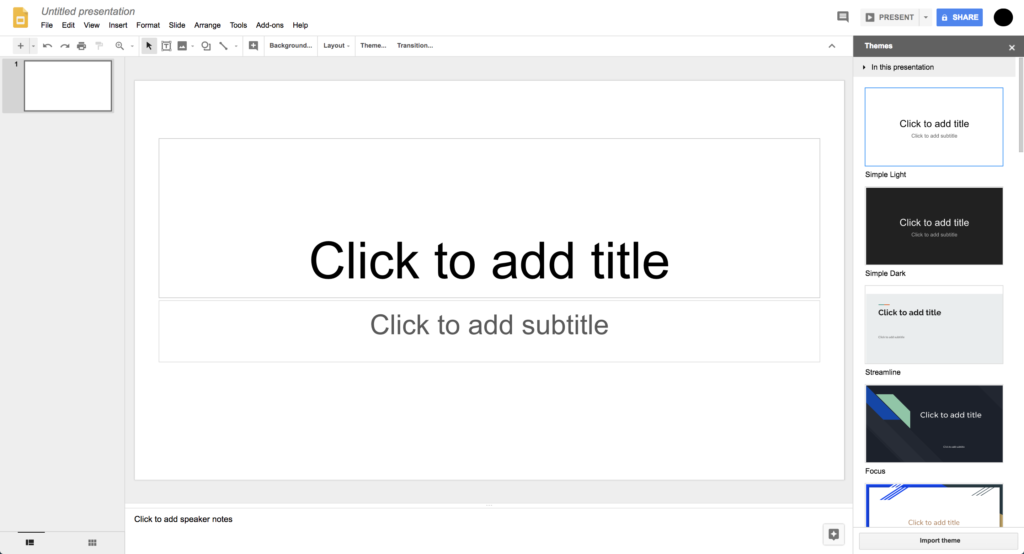
Practice Question
Images and Clip Art
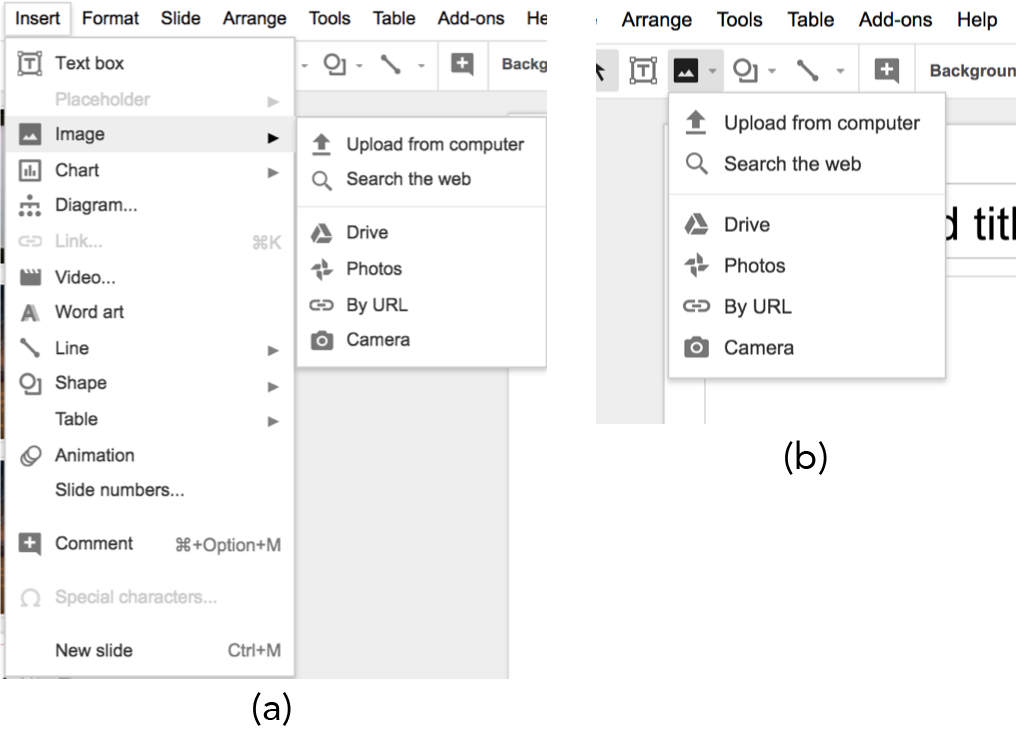
Using art and images adds impact and provides welcome relief to the challenge of processing information-intensive slides. To insert an image, select Insert > image or the image icon, to the right of the Text box icon. As shown in Figure 1, there are multiple options for accessing images; you can also access these options using the drop-down menu to the right of the Image icon. You can upload images from your computer, use the camera on your device to take a photo, link to an image using a URL, or Search Google Images. Selecting Search the Web will link you to Google Images, where you can use a keyword or keywords to search for images, including quote images based on your keyword(s).
When your results appear, you’ll see a small magnifying lens in the bottom right corner of the images. Clicking on the magnifying lens allows you to preview the image prior to selection/inserting. To exit preview (if you don’t want to choose this image), press the left (return) arrow to return to the search options.
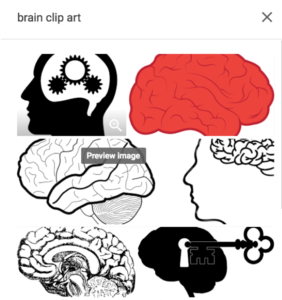
Figure 2.
To select an image, click on it and click on the INSERT button at the bottom of the window. The image will be inserted into your current (highlighted in the thumbnail) slide. If you change your mind, press the escape key (ESC), Undo, or Ctrl+Z to reverse the Insert operation.
To incorporate clip art, select Insert > Image to open the Google Image browser. In the Search area “Search for Google Images,” enter your keyword or desired image and clip art as your search terms. For example, “brain clip art” or “brain + clip art.” For more professional images, include “stock” – stock image or stock photo – in your search. For example, “brain stock image.”
Images shown are generally in the public domain or labeled for commercial use with modification, but as the disclaimer on the Google Image window notes, you are responsible for ensuring that your intended use is in accordance with the image creator’s license.
Practice Question
Videos
Adding video to your Google slides adds yet another level of visual interest and engagement. To incorporate video:
- Select Insert > Video from the main menu. A window will appear where you can search for a YouTube video, or you can select URL at the top of the window, and paste a URL for a specific YouTube video.
- Click on a video to select it and press the Select button to embed it in your current slide. Your video is now embedded in your slide.
![Screenshot of inserting video to Google slides. Image shows YouTube search bar with search term 'learning strategies'. Below are three video results for the search term. The video that is selected is titled "Highly Effective Learning Strategies [Animated Whiteboard Short]".](https://s3-us-west-2.amazonaws.com/courses-images/wp-content/uploads/sites/2785/2018/03/05192733/8.3.11-1024x637.png)
Practice Question
Arranging Objects
When you’re creating a slide with multiple elements—for example, layering text, imagery, lines, shapes or other objects—you may find a need to arrange the elements or objects.
To manage objects on a slide:
- Click Arrange from the main menu.
- Choose from the following options:
- Order: Put the object behind or in front of text, other objects, or images.
- Align horizontally or Align vertically: When you select multiple objects, you can align the edges of the objects.
- Center on page: Center objects vertically or horizontally on a slide.
- Rotate: Change the orientation of an object, by flipping or rotating it.
- Distribute: When you select three or more objects, you can evenly distribute the space between them.
- Group: Lock multiple objects together to make them easier to move around and format.
The Google Slides grid line feature, enabled by default, also provides a visual to help with alignment. When you click and drag an object, you will see colored lines appear that will help you align the object with other objects on the page. This setting (View > Snap to > Guides) is selected by default.
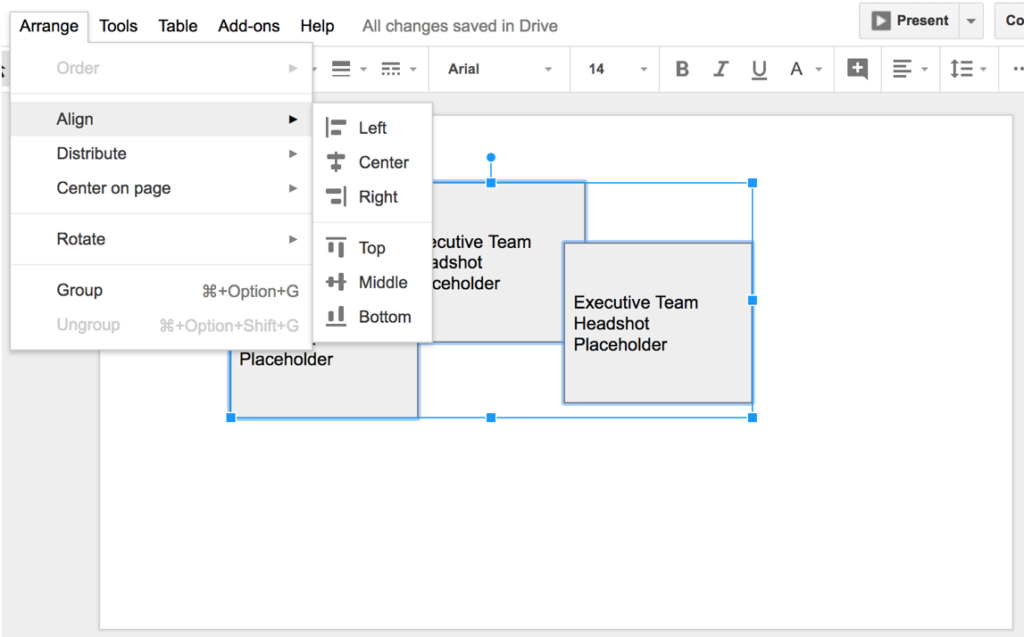
PRactice Question
You can view the transcript for “Google Slides: Getting Started” here (opens in new window).
Click to visit Google’s Teacher Center, with detailed, walk-through videos on using Google Slides.
Candela Citations
- Google Slides. Authored by: Nina Burokas. Provided by: Lumen Learning. Located at: https://courses.lumenlearning.com/wm-businesscommunicationmgrs/chapter/creating-and-organizing-presentations/. Project: Business Communication Skills for Managers. License: CC BY: Attribution
- Google Slides: Getting Started. Authored by: GCFLearnFree.org. Located at: https://youtu.be/1ENtPjEp_5c. License: Other. License Terms: Standard YouTube License
